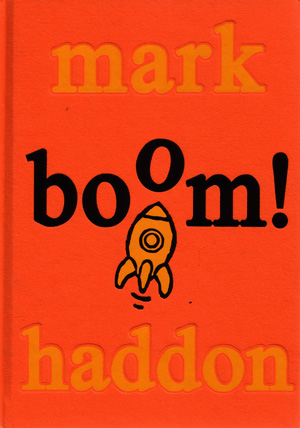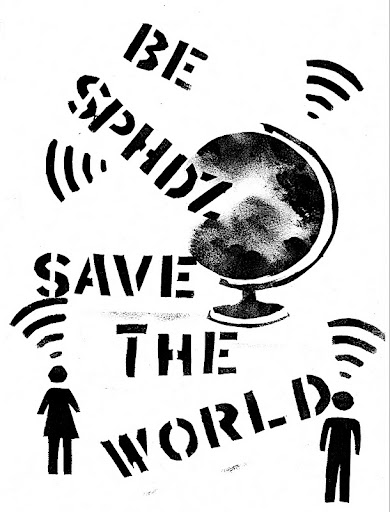 Jinks, Catherine. Living Hell. Houghton Mifflin, 2010.
Jinks, Catherine. Living Hell. Houghton Mifflin, 2010.It's hard to find YA SF these days that isn't about some hideous dystopian near-future. I like reading about nuclear winter, nasty dictatorships, and hungry zombies as much as the next person, but for me, true SF means outer space. Like most folks hooked at an early age by Heinlein and his ilk, tales of aliens, space travel, and distant planets make my heart beat faster.
Living Hell's cover art, with its swashbuckling space suit-clad teen and waving alien tentacles, promises a riproaring space adventure, and to a certain extent it delivers. This is a nail-biting adventure in the old-fashioned SF tradition with a classic setting - the generation ship, taking colonists on a decades-long trip to find a habitable planet that they can settle. 16-year-old Cheney is one of them, having been born during the voyage. The ship Plexus is the only world he has ever known, and even as he tells us about how life as he knew it changed, his narrative voice is filled with nostalgia for those days of long ship corridors made of metal and plastic.
Change it does, and pretty drastically. After flying through a mysterious force, the ship begins to alter, becoming a living entity. Not in any kind of sterile "Hal" way - that's been done too often. No, the physical ship itself turns from metal and plastic into sinew, muscle, and tissue. Imagine living in someone's guts, a la Fantastic Voyage, except that they don't have a space ship to zoom around in. Instead, they have to venture through the now spongy, slimy, lumpy, stringy pink hallways and corridors on foot. Oh, and as in Fantastic Voyage, there is a rather active immune system that sees the humans as intruders who must be destroyed.
This is not a light-hearted SF romp. The body count is high, the deaths are gruesome, and the outlook is grim. This was somewhat unexpected for me, as Catherine Jinks' previous books, not to mention the corny retro jacket art, led me to believe there would be some kind of tongue-in-cheek levity. And while the idea of everyday objects like shuttles and laundry detergent discs transforming into internal body parts is sort of amusing at first, the reality is quite horrifying.
Cheney, our narrator, describes all this in vivid and visceral terms. The reaction of everyone from children to adults to this terrifying situation is absolutely authentic. Faced with a new hideous sight or discovery, the first reaction is often a panicked wail of "Oh no! Oh NO!" But then folks rally and do what they need to do to survive, successfully or otherwise. No one does anything that seems super-heroish or out of character, so the reader stays fully immersed in the intensity of the action.
Amidst the action, we do learn a lot about the culture aboard a relatively small generation ship. Loyalty and a sense of team spirit are clearly indoctrinated from an early age - Cheney's intense admiration for his "big brother" or mentor is balanced by his fierce and unquestioned need to keep the younger children safe. The fact that his "little brother" is such a wild and unpredictable person disturbs him greatly, as ship life is all about harmony and control - but that disruptive spirit might well be needed to deal with this new situation they all find themselves in.
The denoument is abrupt and somewhat predictable, and the reader will be left with lots of questions. We know from the beginning that Cheney, at least, will survive this encounter - but the details of his existence must be guessed at, as we only get hints. One thing I love about dystopian books is all that gritty detail about daily life under duress, but we don't get that here. How does one ever get clean if one lives in something's slimy guts? Inquiring minds want to know (but would rather not spend to much time imagining - bleah!).
All in all, good scary gooey slimy deadly fun - in outer space! Recommended for ages 13 and up.



















